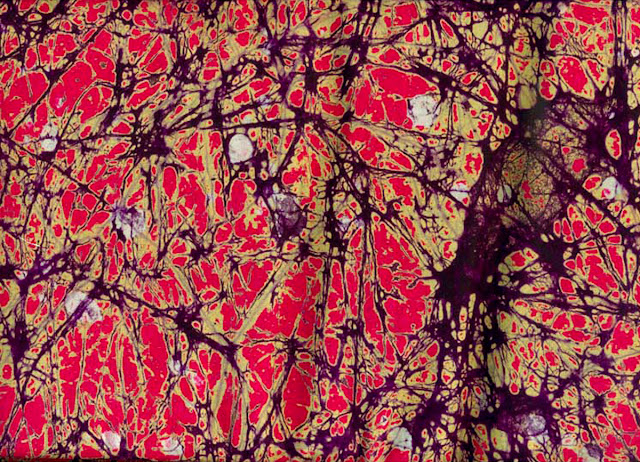Diseño de moda inspirado en tejidos africanos. Hank Koers Collection. Rotterdam Museumnacht 2011
La diversidad de la estética identitaria de los pueblos del mundo se mantiene viva en la artesanía de los distintos países africanos. Impresiona la riquísima variedad de formas, texturas y colores que proliferan en los tejidos y telas teñidas provenientes de África. Una expresión popular irreductible a las tendencias de homogeneización que hoy experimentamos.
La maquinaria económica planetaria, que ha acabado consolidándose a principios de este siglo XXI, se apoya en unas tecnologías que tienden a transformar a los seres humanos en meros engranajes de los grandes sistemas de gestión multinacional, those tools that impose contemporary daily. In relation to this, recently read a comment certainty about the future that awaits us but we managed that artistic talent is freed from the dictatorship of the technique. It provided the key to this problem José Manuel Sánchez Ron when Matt Ridley quoted in an excellent article entitled Technical and essence of humanity. He said there:
With this new "megatécnica", the dominant minority has created a uniform structure, encompassing and designed to operate automatically. Instead of acting as an autonomous and active personality, man will become a conditioned animal species by machines, whose specific functions the nurture or be strictly limited and controlled for the benefit of certain collective organizations and depersonalized.
Ghana Batik in pinks, yellow, ocher and purple. Fabric and Art
Few places have escaped this dehumanizing process where people no longer have any significance against commercial and technological forces. However, Africa is a continent that has been marginalized and impoverished economic movements for much of the twentieth century. And, thus, provides opportunities for freshness and freedom of expression do not exist elsewhere. Unfortunately for the time-and luck- of its inhabitants. And just as in the rest of the world people are gone gradually being engulfed by a form of mechanization and comprehensive codification and sterilizing, in the countries that make up the majority of the African continent has remained highly popular creativity, associated with severe poverty.
One of the most fascinating expressions of these performing art forms crafted Africans is designing textiles. Their diversity and expression extends to all facets of daily life, cities, housing, Household, utensils and, course, dress.
Mali Artisan painting a piece of Bogolan. Photos: Anwyn , Flickr
In the East African proliferating tissues intricate geometric designs while across the continent the color is the main reason in the dyeing of fabrics. In the latter case, is the contemporary expression of a region rich aesthetically, heir to an ancient culture of kingdoms and empires articulated along the Niger River Basin.
Designations as Chitenge, kikoy and kanga, refer to traditional cloths countries like Kenya, Uganda and Tanzania. At the other end of the continent, Kenté, basin and bogolan refer to different types of dyed or hand-painted in Mali, Senegal and Ghana.
Skirt Ngongo, Kuba. Republic of Congo
Recently, there have been several international exhibitions on the subject that offer countless examples and interpretations. African textiles are also traded strong in Europe and the United States as a result of their extreme variety and color.
Teen suburban Johannesburg, South Africa. Lolo Veleko. Image of the exhibition African textiles Metropolitan Museum. 2008
It should be noted that held in 2008 at the Metropolitan Museum of New York, entitled The Essentials Art of African Textiles, in which tradition and had the major influence that has fabric design in the development of the African aesthetic.
On Rotterdam Museumnacht of 2011 presented the collection of clothes organized by Henk Koers, geometries inspired by African designs. A curious effort to introduce a breath of fresh air, colorful aesthetics austere and boring in Central European societies.
African Interior. Rotterdam Museumnacht 2011







Not cease to amaze ;- )